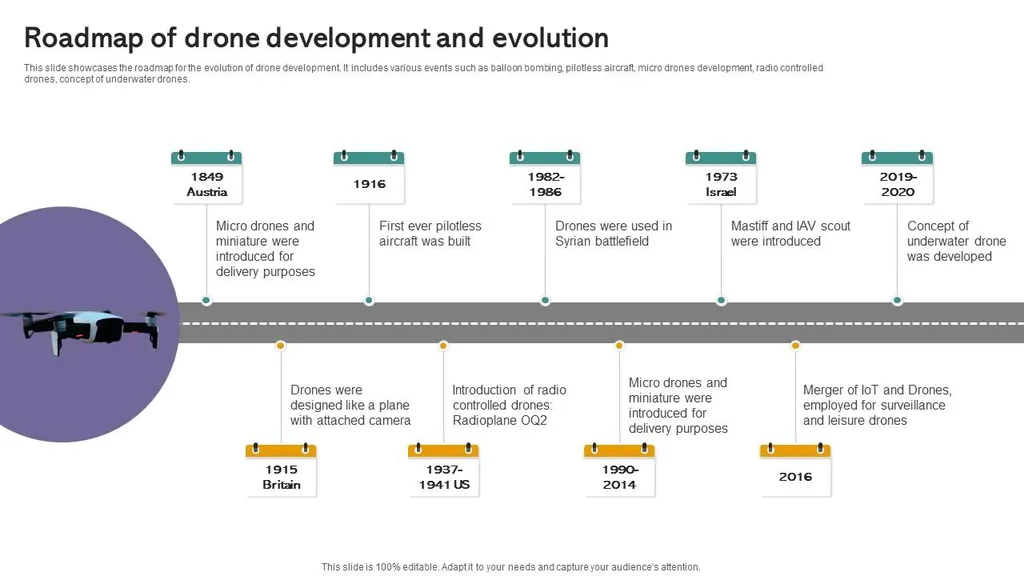Researchers Ruchita Singh and Sandeep Kumar have published a comprehensive study on the evolution, classification, and future of unmanned aerial vehicles (UAVs), commonly known as drones. Their work, titled “A Comprehensive Insights into Drones: History, Classification, Architecture, Navigation, Applications, Challenges, and Future Trends,” offers a structured synthesis of existing research and perspectives, providing a roadmap for how drones will continue to transform industries ranging from agriculture to defence.
The study traces the origins of drones back to their military applications, where they were initially deployed for reconnaissance and surveillance. Advancements in materials, electronics, and software have since propelled drones into a wide array of civilian and commercial roles. Singh and Kumar meticulously outline the taxonomy of drones, categorising them based on size, range, endurance, and payload capacity. This classification framework is crucial for understanding how different types of drones are suited to specific tasks, whether it be long-range surveillance, precision agriculture, or last-mile delivery.
The architecture of modern drones is another key focus of the research. The study delves into the components that make up a UAV, including its airframe, propulsion system, sensors, and communication modules. The researchers highlight how advancements in these areas have led to more efficient, durable, and capable drones. For instance, the integration of lightweight materials and advanced battery technologies has extended flight times, while improvements in sensor technology have enhanced data collection and real-time decision-making.
Navigation systems are a critical aspect of drone functionality, and the study explores the various methods used to guide UAVs, from GPS-based navigation to autonomous flight control systems. The researchers discuss how these systems enable drones to operate in complex environments, avoiding obstacles and adapting to changing conditions. They also emphasise the role of artificial intelligence (AI) in improving navigation, with machine learning algorithms allowing drones to make real-time adjustments and optimise flight paths.
The applications of drones are vast and varied, and Singh and Kumar provide an overview of how these unmanned systems are being utilised across different sectors. In agriculture, drones are used for crop monitoring, precision spraying, and soil analysis, helping farmers increase yields and reduce environmental impact. In logistics, drones are revolutionising last-mile delivery, offering faster and more efficient transportation of goods. In healthcare, drones are being deployed for medical supply delivery, particularly in remote or hard-to-reach areas. The study also highlights the role of drones in disaster management, where they provide critical aerial surveillance and aid in search and rescue operations.
Despite their numerous benefits, drones face significant challenges that limit their widespread adoption. The researchers identify technical hurdles, such as limited battery life and the need for improved obstacle avoidance systems. Environmental concerns, including noise pollution and the impact on wildlife, are also addressed. Economic factors, such as the high cost of advanced drones, and regulatory issues, including privacy and airspace management, are discussed in detail. Ethical considerations, such as the potential misuse of drones for surveillance or autonomous weapons, are also explored.
Looking ahead, Singh and Kumar highlight several future trends that are likely to mitigate these challenges and further enhance the capabilities of drones. Autonomous navigation systems, powered by AI and machine learning, are expected to improve drone efficiency and reliability. The integration of advanced sensors and communication technologies will enable drones to operate in more complex and dynamic environments. The researchers also predict that advancements in battery technology and alternative propulsion systems will extend flight times and reduce environmental impact.
The study concludes by emphasising the transformative potential of drones across various industries. By addressing the current challenges and leveraging emerging technologies, drones are poised to play an even more significant role in shaping the future of agriculture, logistics, healthcare, disaster management, and beyond. Singh and Kumar’s work serves as a valuable resource for researchers, policymakers, and industry professionals seeking to understand the current state and future trajectory of drone technology. Read the original research paper here.

